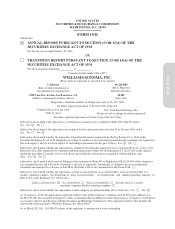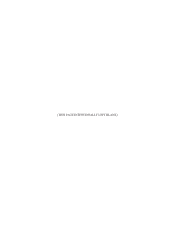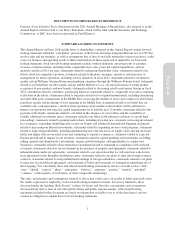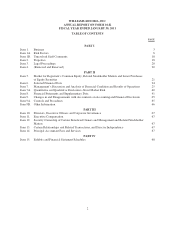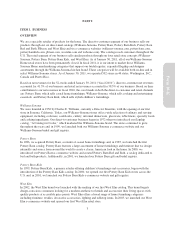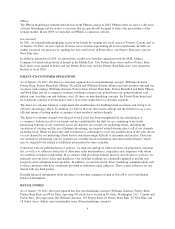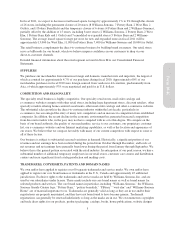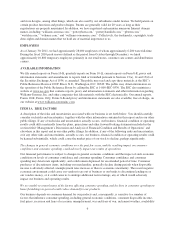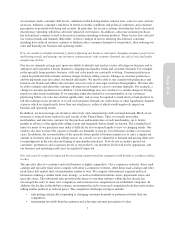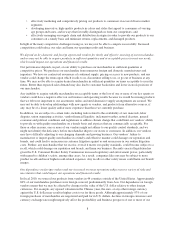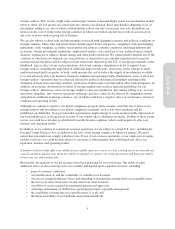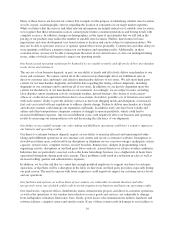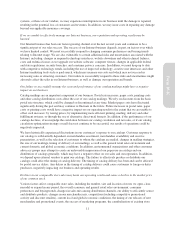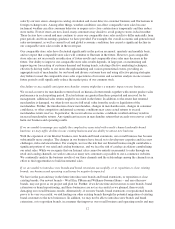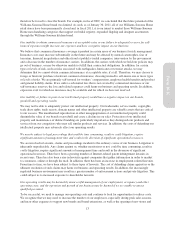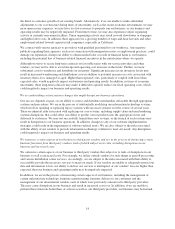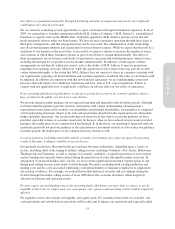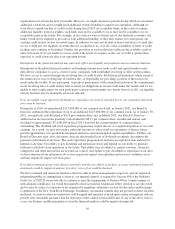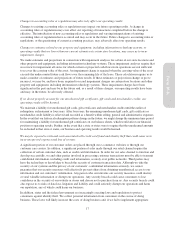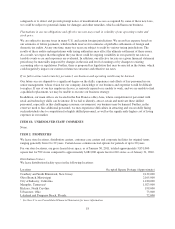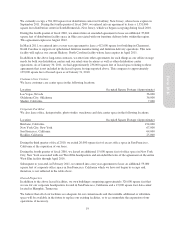Pottery Barn 2010 Annual Report Download - page 23
Download and view the complete annual report
Please find page 23 of the 2010 Pottery Barn annual report below. You can navigate through the pages in the report by either clicking on the pages listed below, or by using the keyword search tool below to find specific information within the annual report.
foreign vendors. This, in turn, might cause such foreign vendors to demand higher prices for merchandise in their
effort to offset any lost profits associated with any currency devaluation, delay merchandise shipments to us, or
discontinue selling to us, any of which could ultimately reduce our sales or increase our costs. In addition, an
increase in the cost of living in the foreign countries in which our vendors operate may result in an increase in
our costs or in our vendors going out of business.
We are also subject to other risks and uncertainties associated with changing economic and political conditions in
foreign countries. These risks and uncertainties include import duties and quotas, compliance with anti-dumping
regulations, work stoppages, economic uncertainties and adverse economic conditions (including inflation and
recession), foreign government regulations, employment matters, wars and fears of war, political unrest, natural
disasters, regulations to address climate change and other trade restrictions. We cannot predict whether any of the
countries in which our raw materials are sourced from, or our products are currently manufactured or may be
manufactured in the future will be subject to trade restrictions imposed by the U.S. or foreign governments or the
likelihood, type or effect of any such restrictions. Any event causing a disruption or delay of imports from
foreign vendors, including the imposition of additional import restrictions, restrictions on the transfer of funds
and/or increased tariffs or quotas, or both, could increase the cost or reduce the supply of merchandise available
to us and adversely affect our business, financial condition and operating results. Furthermore, some or all of our
foreign vendors’ operations may be adversely affected by political and financial instability resulting in the
disruption of trade from exporting countries, restrictions on the transfer of funds and/or other trade disruptions. In
addition, an economic downturn in or failure of foreign markets may result in financial instabilities for our
foreign vendors, which may cause our foreign vendors to decrease production, discontinue selling to us, or cease
operations altogether. Our overseas operations in Europe and Asia could also be affected by changing economic
and political conditions in foreign countries, any of which could have a negative effect on our business, financial
condition and operating results.
Although we continue to improve our global compliance program, there remains a risk that one or more of our
foreign vendors will not adhere to our global compliance standards, such as fair labor standards and the
prohibition on child labor. Non-governmental organizations might attempt to create an unfavorable impression of
our sourcing practices or the practices of some of our vendors that could harm our image. If either of these events
occurs, we could lose customer goodwill and favorable brand recognition, which could negatively affect our
business and operating results.
In addition, as we continue to expand our overseas operations, we are subject to certain U.S. laws, including the
Foreign Corrupt Practices Act, in addition to the laws of the foreign countries in which we operate. We must
ensure that our employees comply with these laws. If any of our overseas operations, or our employees or agents,
violates such laws, we could become subject to sanctions or other penalties that could negatively affect our
reputation, business and operating results.
A number of factors that affect our ability to successfully open new stores or close existing stores are beyond our
control, and these factors may harm our ability to expand or contract our retail operations and harm our ability
to increase our sales and profits.
Historically, the majority of our net revenues have been generated by our retail stores. Our ability to open
additional stores or close existing stores successfully will depend upon a number of factors, including:
• general economic conditions;
• our identification of, and the availability of, suitable store locations;
• our success in negotiating new leases and amending or terminating existing leases on acceptable terms;
• the success of other retail stores in and around our retail locations;
• our ability to secure required governmental permits and approvals;
• our hiring and training of skilled store operating personnel, especially management;
• the availability of financing on acceptable terms, if at all; and
• the financial stability of our landlords and potential landlords.
9
Form 10-K


